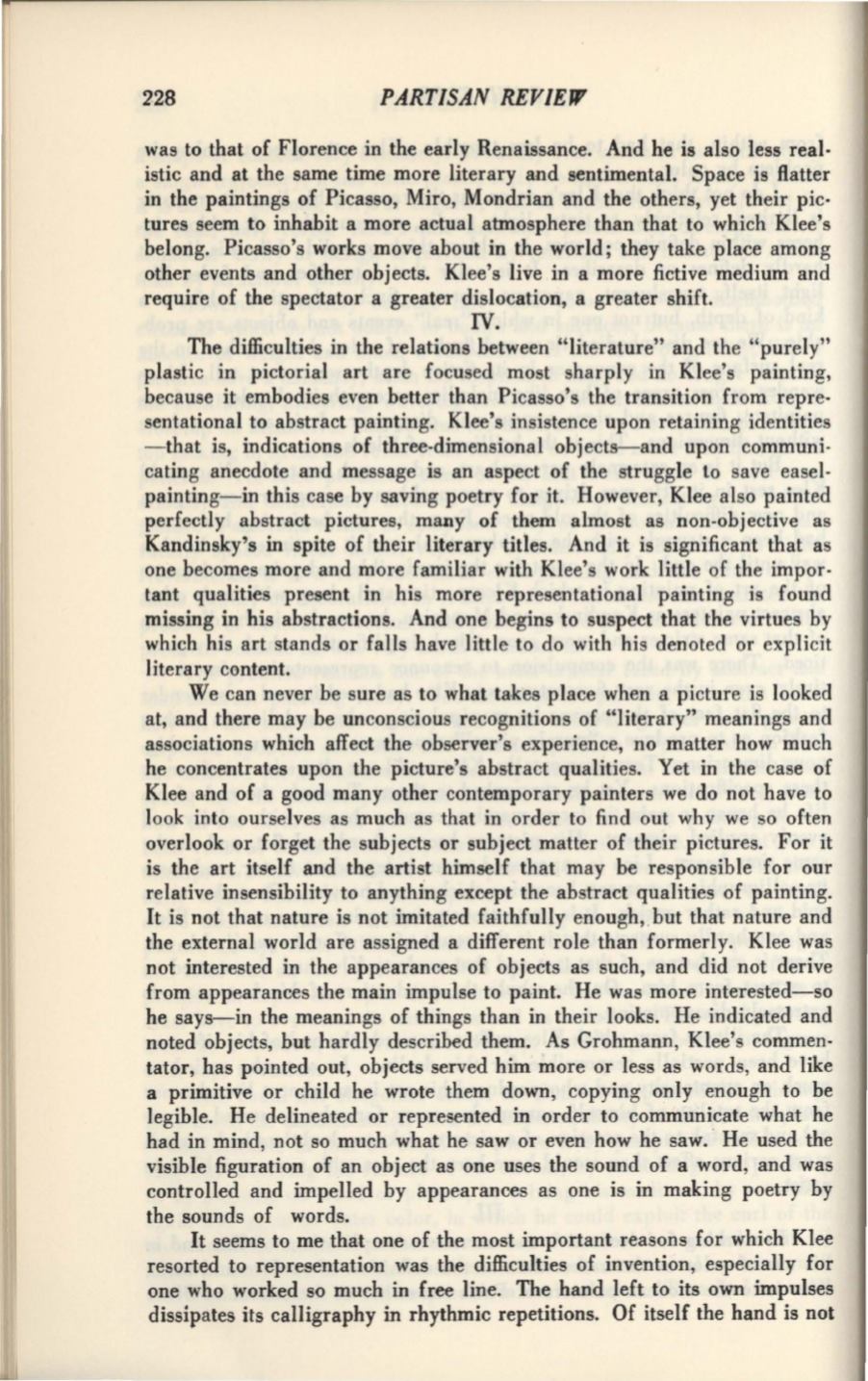
228
PARTISAN REVIEW
was to that of Florence in the early Renaissance. And he is also less real·
istic and at the same time more literary and sentimental. Space is flatter
in the paintings of Picasso, Miro, Mondrian and the others, yet their pic·
tures seem to inhabit a more actual atmosphere than that to which Klee's
belong. Picasso's works move about in the world; they take place among
other events and other objects. Klee's live in a more fictive medium and
require of the spectator a greater dislocation, a greater shift.
IV.
The difficulties in the relations between "literature" and the "purely"
plastic in pictorial art are focused most sharply in Klee's painting,
because it embodies even better than Picasso's the transition from repre·
sentational to abstract painting. Klee's insistence upon retaining identities
-that is, indications of three-dimensional objects-and upon communi·
eating anecdote and message is an aspect of the struggle to save easel·
painting-in this case by saving poetry for it. However, Klee also painted
perfectly abstract pictures, maily of them almost as non-objective as
Kandinsky's in spite of their literary titles. And it is significant that as
one becomes more and more familiar with Klee's work little of the impor·
tant qualities present in his more representational painting is found
missing in his abstractions. And one hegins to suspect that the virtues by
which his art stands or falls have little to do with his denoted or explicit
literary content.
We can never be sure as to what takes place when a picture is looked
at, and there may be unconscious recognitions of "literary" meanings and
associations which affect the observer's experience, no matter how much
he concentrates upon the picture's abstract qualities. Yet in the case of
Klee and of a good many other contemporary painters we do not have to
look into ourselves as much as that in order to find out why we so often
overlook or forget the subjects or subject matter of their pictures. For it
is the art itself and the artist himself that may be responsible for our
relative insensibility to anything except the abstract qualities of painting.
It is not that nature is not imitated faithfully enough, .but that nature and
the external world are assigned a different role than formerly. Klee was
not interested in the appearances of objects as such, and did not derive
from appearances the main impulse to paint. He was more interested-so
he says-in the meanings of things than in their looks. He indicated and
noted objects, but hardly described them. As Grohmann, Klee's commen·
tator, has pointed out, objects served him more or less as words, and like
a primitive or child he wrote them down, copying only enough to he
legible. He delineated or represented in order to communicate what he
had in mind, not so much what he saw or even how he saw. · He used the
visible figuration of an object as one uses the sound of a word, and was
controlled and impelled by appearances as one is in making poetry by
the sounds of words.
It seems to me that one of the most important reasons for which Klee
resorted to representation was the difficulties of invention, especially for
one who worked so much in free line. The hand left to its own impulses
dissipates its calligraphy in rhythmic repetitions. Of itself the hand is not


